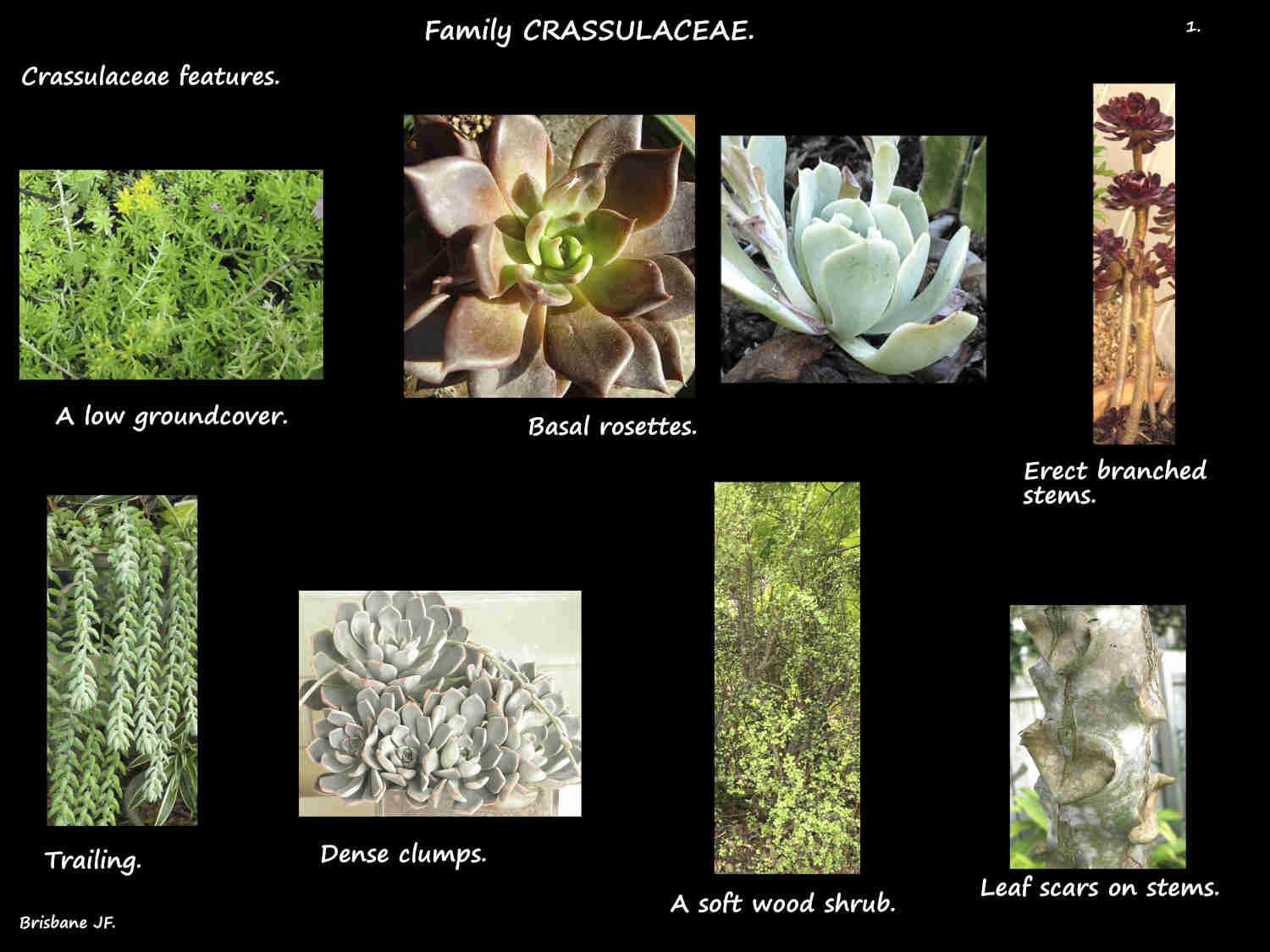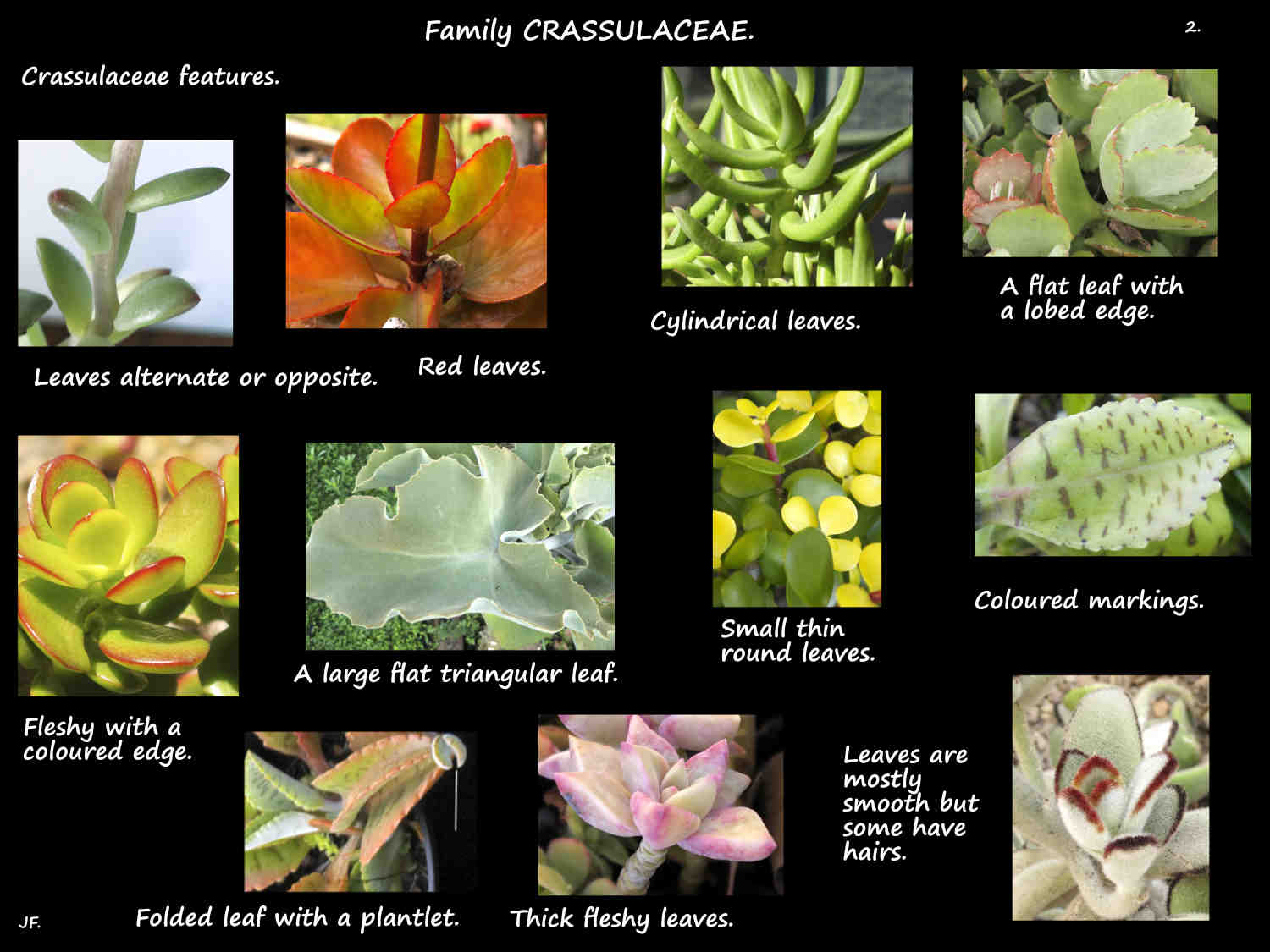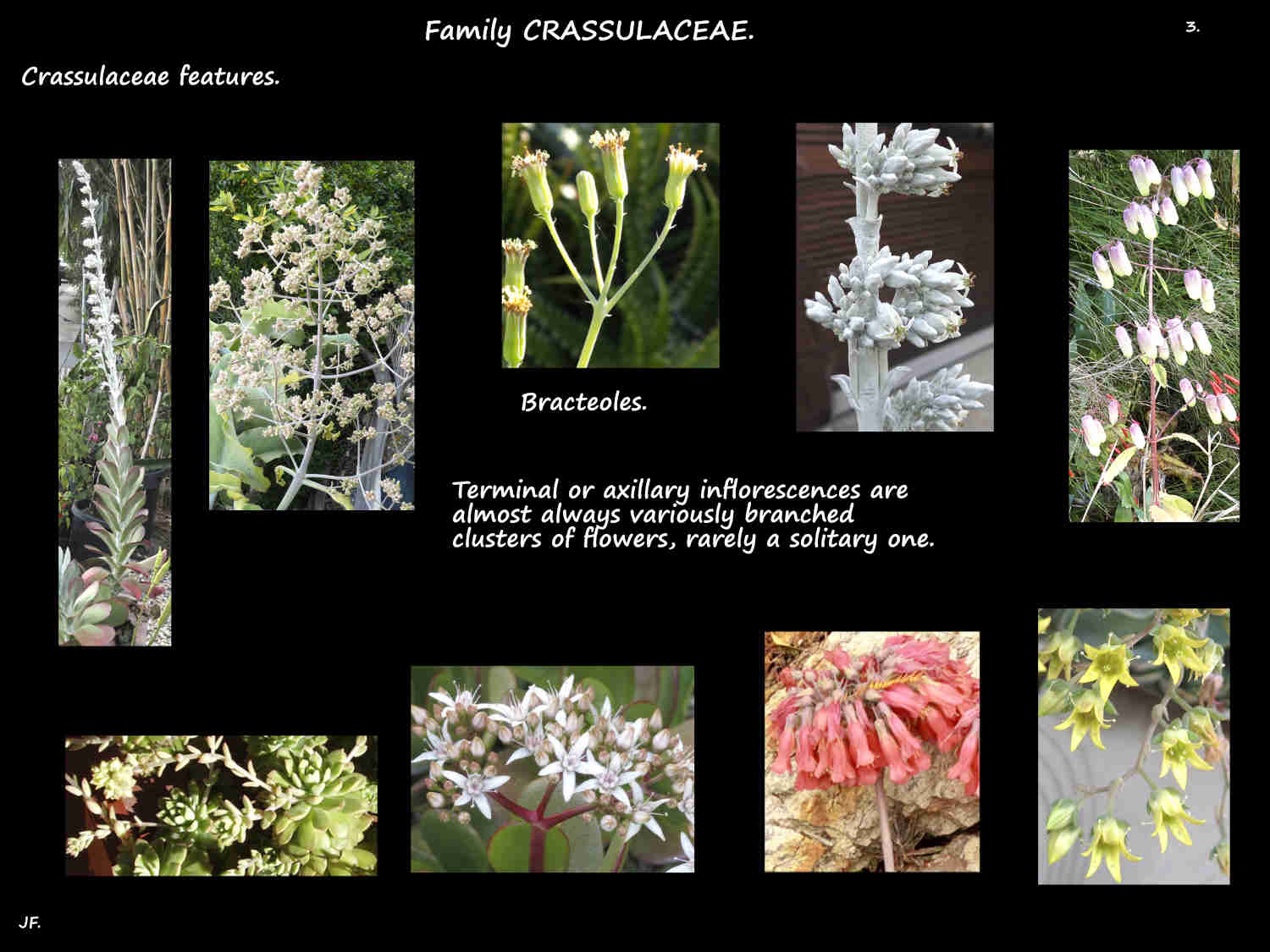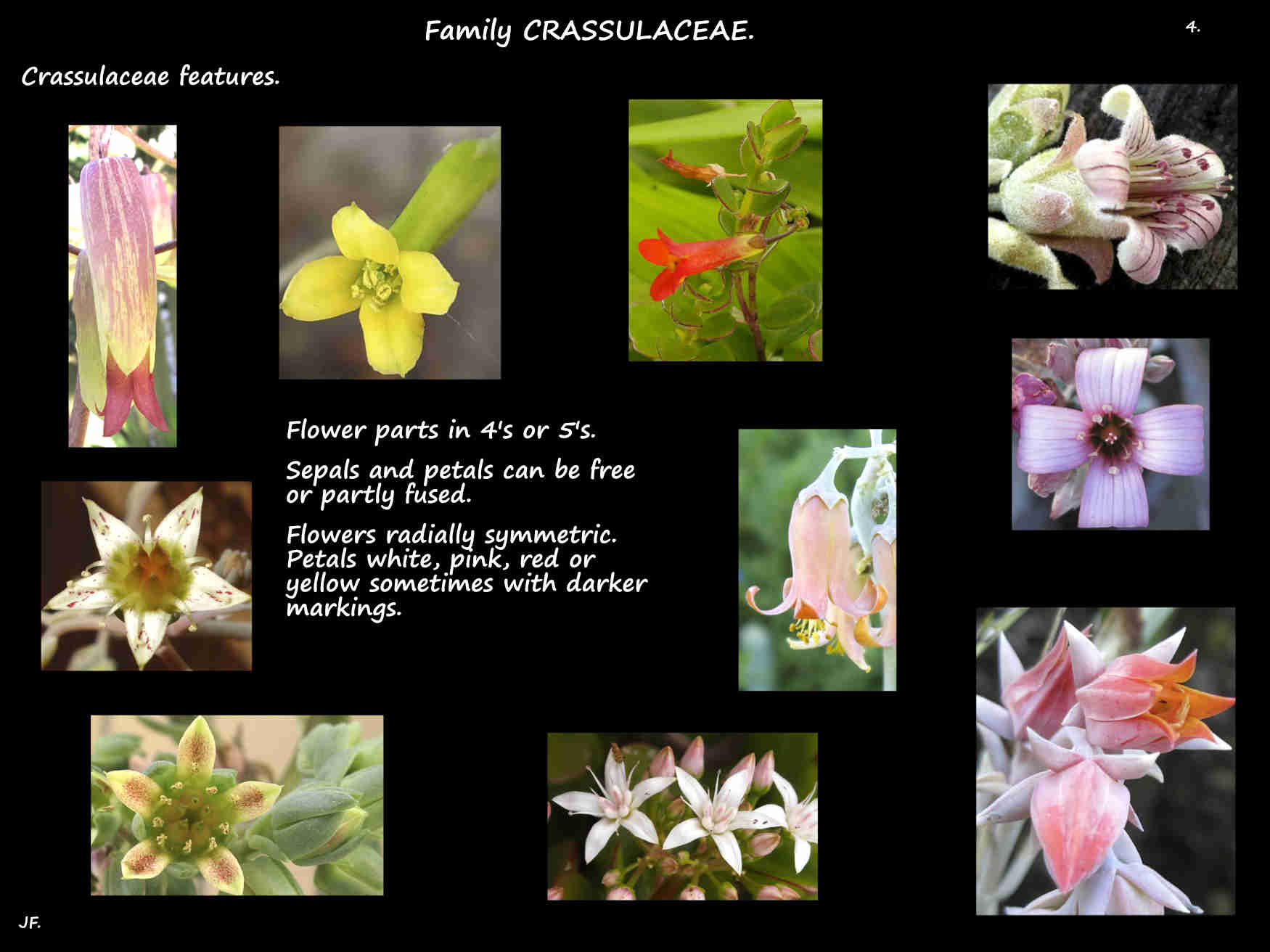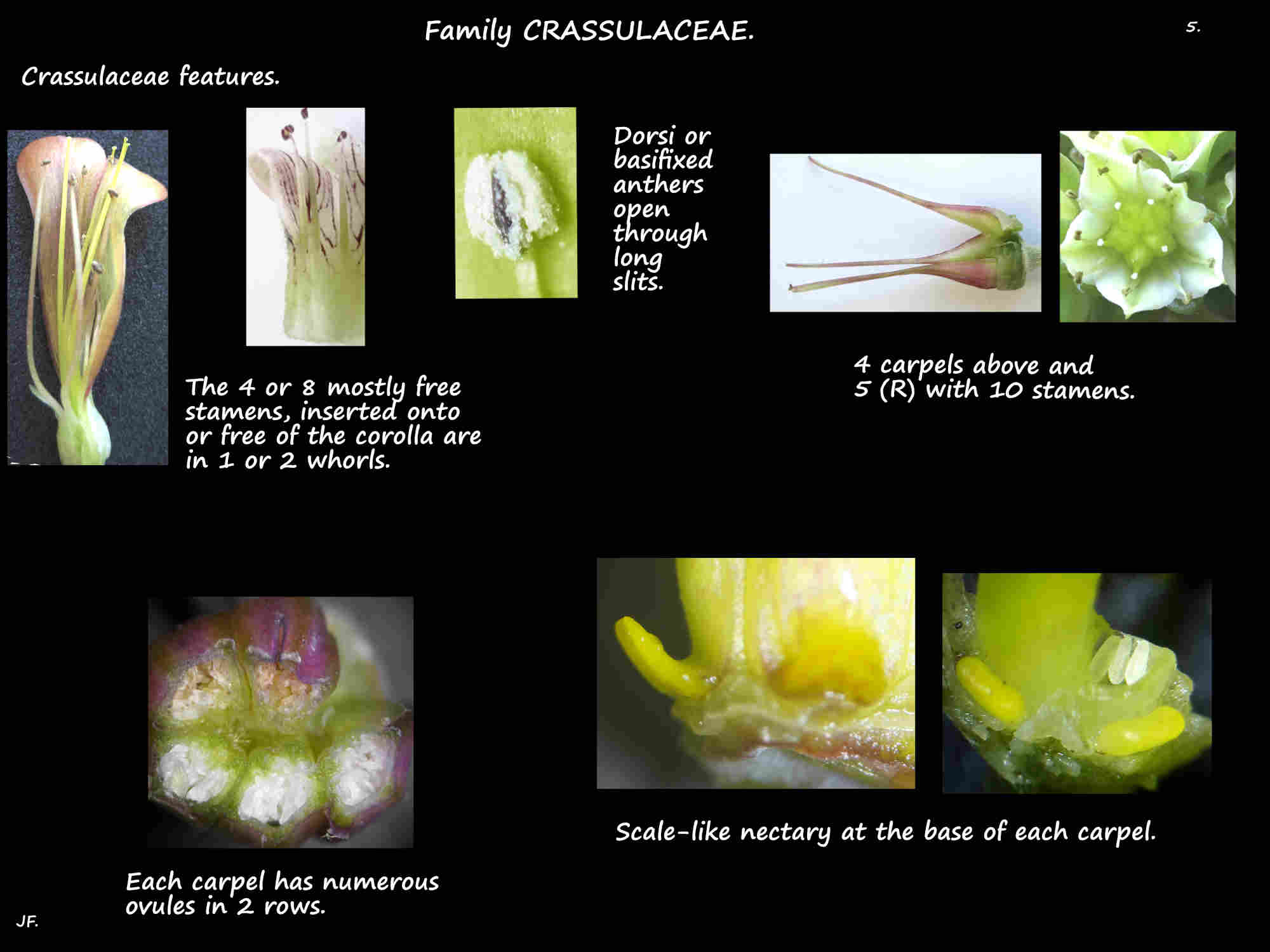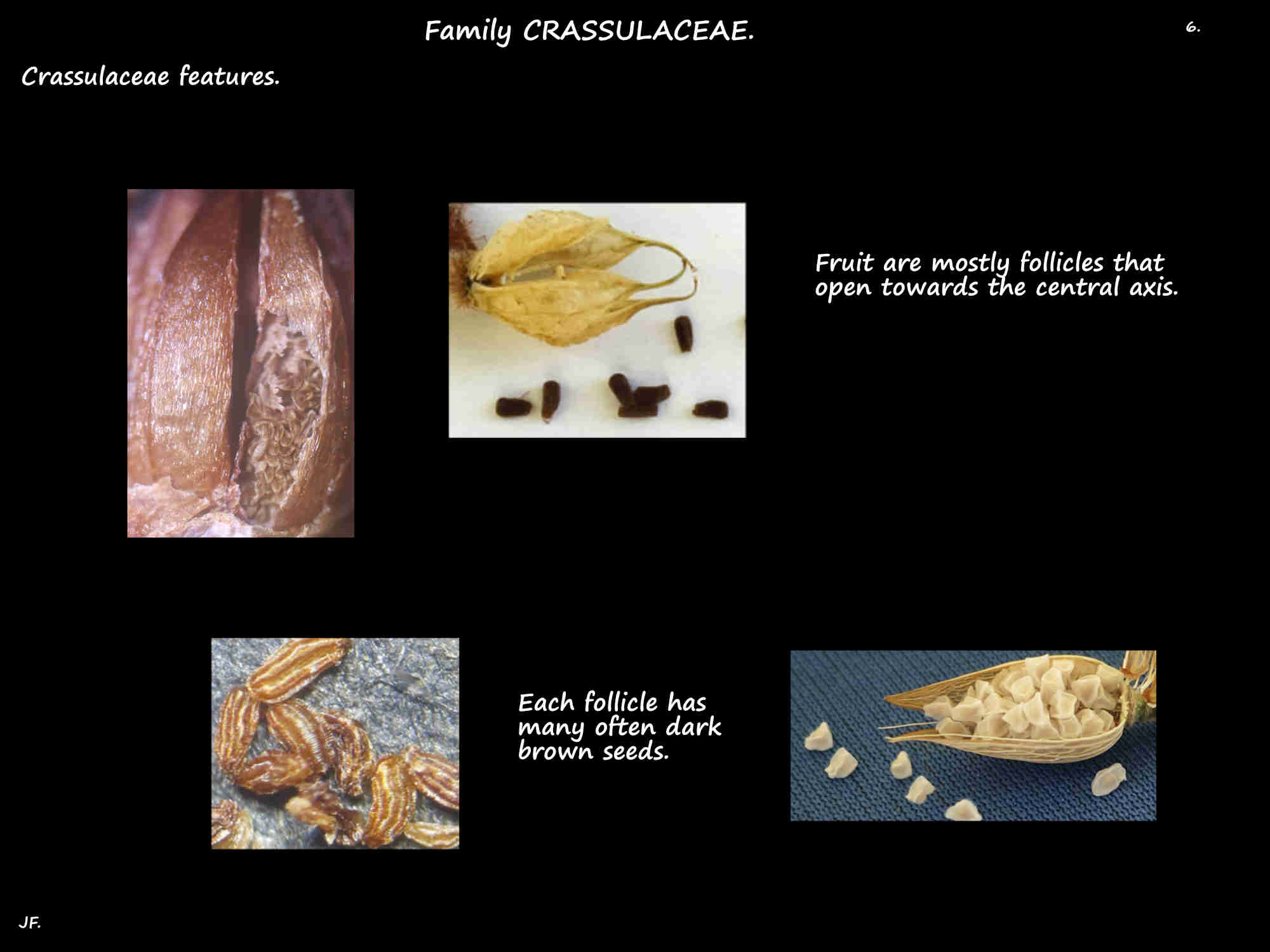Crassulaceae.
The Stonecrop family has around 24 to 30 genera and 1350 (900 to 1400) species.
Many are from South Africa but Australia has 4 native genera with 19 species of which 6 are from S. E. Queensland.
Better known genera include Aeonium, Cotyledon, Crassula, Echeveria, Kalanchoe, Sedum and Sempervivum.
They are mostly herbs or soft-wooded shrubs with succulent stems and leaves.
The usually simple leaves can be alternate, opposite or in whorls and often form a basal rosette.
Leaves may have a petiole or almost none.
Leaves with flat blades can be round, ovate, obovate, oblong or elliptic.
Some have linear leaves that are round in cross section and some are folded.
Most leaves are entire but some are divided with an odd terminal leaflet.
The edge can be smooth, lobed or toothed and the tip rounded or pointed.
There may be no visible veins, just a faint midrib or pinnate veins.
Most stems and leaves have a bluish-white waxy bloom.
There may be a few hairs and pores are found on both surfaces.
Plantlets may develop on the leaves or in the inflorescences.
Terminal or axillary inflorescences are typically a variously branched cluster or rarely a single flower.
On each branch the end flower opens first – a cyme.
Bracts are almost always present and sometimes there are bracteoles.
The usually radially symmetric and bisexual flowers are on a stalk.
The small to medium sized flowers typically have parts in 4’s or 5’s (3 to 6).
The sepals may be free or fused into a bell or cup-shaped tube with lobes on the rim.
Petals are usually free but may be fused often only at the base but sometimes more.
The petals, or their lobes alternate with the sepals.
The petals can be white or cream, or shades of pink or yellow sometimes with markings in a darker or different colour.
The stamens are equal in number to the sepals and petals or twice that number.
In 1 or 2 whorls the filament bases are almost always free of each other.
They may be free of, or fused to the petals and are sometimes of different lengths.
The basi to dorsi-fixed anthers open sideways or slightly inwards through longitudinal slits.
Only a few species have staminodes.
The number of carpels in the superior ovary is usually equal to the number of sepals and petals.
Carpels are usually free of each other but may be slightly fused at the base.
Each has 1 locule with (1) many ovules in 2 rows with marginal or parietal placentation.
The apical styles each have a stigma with papillae.
There is a scale-like nectary attached to the base of each carpel.
Fruit are mostly follicles but there are some capsules.
Each follicle (one from each carpel) opens down the side facing the central axis.
There are usually many small dark seeds in each follicle.
***********************************
Mabberley divides them into 3 subfamilies.
1. Sempervivoideae with 5 tribes (Aeonieae, Sedeae, Semperviveae, Telephieae and Umbiliceae).
There are many hybrids between these.
2. Kalanchoideae which are typically woody plants with the petals fused into a tube (includes Bryophyllum).
3. Crassuloideae have decussate leaves (opposite with adjacent pairs at right angles).
There are hundreds of hybrids and cultivars between species in the same or different genera.
Many are used as garden and pot plants and some have become naturalised in S. E. Queensland where they are weeds.
J.F.
